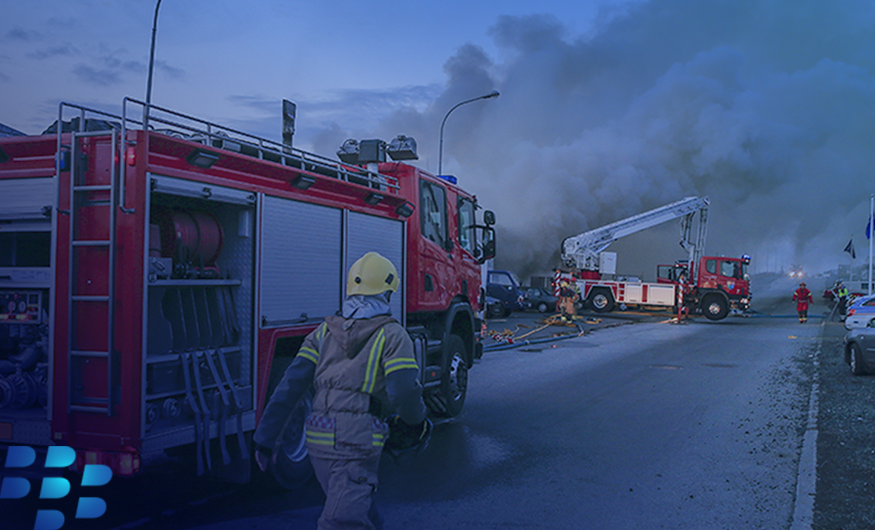Critical Event Management: How to React During the “Golden 5 Minutes”
There are so many aspects to consider when it comes to critical event management (CEM) that things can get overwhelming, fast. So, over the last few months, we’ve been reviewing and documenting all the factors that tend to prevent organizations from achieving an optimal approach to CEM, and I want to share these things with you today.
Our team considered everything we hear when we speak with business continuity managers, disaster recovery experts, and cybersecurity leaders; information gleaned from recent analyst reports and briefings; and our team’s many experiences in the CEM field.
From that long list, we’ve been able to group the issues into three key areas. And here is an added bonus — alliteration makes them easy to remember: “Time. Technology. Trust.”
At a high level, we summarize them this way:
- Time: In a crisis, there’s no time to waste. Making better decisions, faster, is how you minimize the impact of an event and maximize the impact of your response. (Unfortunately, many existing approaches burn time at every turn).
- Technology: Digital transformation can power faster, more effective response. (However, many organizations and teams are still using disparate, outdated, overcomplicated, or “workaround” solutions. This often makes it hard or even impossible to reach all the right people at the right time, confirm their status, and gather insight from people on the scene).
- Trust: The best outcomes depend on valid information. (But many organizations and employees can’t be sure the information they’re sharing or receiving is accurate or secure).
Over the next few weeks, we’ll spend a little time diving into these three critical areas, and share quick and easy questions you can ask, or steps you can take, to solve challenges in each category. Even if you feel like you’re firing on all cylinders when it comes to CEM, there’s always room to improve. And in this realm, small improvements can save money, or even save lives.
The “Golden Five Minutes” in Incident Response
The golden hour, a concept that’s been around since WWI and possibly longer, represents the time immediately following a traumatic injury “during which there is the highest likelihood that prompt medical and surgical treatment will prevent death.”
The same idea has long been applied to critical event management – and of course, it depends on the nature of the incident – but in recent years, that “hour” has been cut to a target response time of just five minutes.
For many organizations, inefficiencies are slowing every part of their response. And according to the Business Continuity Institute (BCI), 75% of organizations are unable to activate their plans within the “golden five minutes.”
There’s no way to stop the clock, so great outcomes depend on being prepared, gathering real-time and accurate intelligence, communicating immediately with recipients, ensuring the safety of everyone involved, and collaborating with partner groups (like emergency services or other local businesses) throughout.
Delays with any of these aspects can be disastrous. Health and safety are always the first concerns, but it also ultimately impacts budgets. Consider this finding from the Aberdeen Research report, “Emergency Planning: How Critical Event Management Limits the Risk of IT Disruptions and Cyber Attacks”: “An hour of downtime for critical systems on average can run close to $300,000, and in many cases can push into seven figures.”
That’s probably just one of the reasons that, according to PwC, during any crisis, the biggest worry for CEOs is gathering accurate information quickly. Specifically, they’re focused on “identifying impending threats to their operations as early as possible,” and, “responding in a timely but comprehensive manner.”
CEM When Lives Are at Stake
Burning through money is one thing. But often, the consequences of delays are far worse.
Take the example of California’s 2017 wildfires, when more than 10,000 buildings were destroyed, and more than 45 people died. Authorities resorted to knocking on doors to issue evacuation warnings. How might technology have altered outcomes?
Or consider the horrendous and heart-breaking results that stem from delays during active shooter scenarios.
The positive news, according to Aberdeen Research: “With critical event management in place, organizations are 70% more likely to analyze and understand the impact of critical events in minutes or less, 3x more likely to resolve critical events in less than a day, and 2x more likely to see no or limited impact on revenue from critical events.”
But not all CEM solutions are equal.
Five Questions to Ask About Your CEM Solution
Your critical event management solution needs to help you to save precious seconds, minutes, and hours at every turn.
As you consider your current solution, ask yourself these five questions:
- Is it a central hub – a single application that lets you send messages to all the places you need to? If so, you won’t waste time jumping from one messaging platform to another. You’ll be able to craft a message once and have it sent to multiple communication channels and platforms, such as Microsoft Teams®, on-site signage, and landlines – everywhere you need it to go.
- Does it help you prepare? You should be able to use it for planning your responses to any number of scenarios and ensuring everyone is on board, and knows their role. Then, in a crisis situation, if plans need to change, all the key decision-makers can be notified.
- Does it let you do most of the work upfront, before a crisis hits? Templates make it easy to craft messages in advance, so you don’t waste time puzzling over wording in the heat of the moment. You can save time for recipients too, by pre-crafting replies, so all they have to do is click the one that applies to them, like “I’m injured and can’t leave the premises. Send help to my location.”
- Does it provide two-way communication? Instead of wasting time sending teams to remote locations to confirm reports, have on-site personnel upload a secure, geo-tagged photo or video, even if they’re on the move.
- Does it house all your contacts? Your internal contact databases should be kept up to date automatically within your CEM solution — and contact details for outside partners should be kept there, too — so you’re never left scrambling for a key player’s mobile number at midnight.
Time-to-Value: Think Days and Weeks, Not Months
There’s another factor to consider when it comes to time: time-to-value. If you’re considering replacing or augmenting your current CEM platform, investigate how long it’s likely to take from the time you make a decision until you’re fully operational. In other words: When you will be confident enough to use your new solution when the next major event occurs.
For many solutions, the reality is that deployment may take months. If that’s not good enough (and we don’t think it is), find a solution that can be delivering value – perhaps even saving lives – within days or weeks. With BlackBerry® AtHoc®, that’s possible.
We know this because of what our AtHoc customers are saying. Time is now on their side:
“Emergency notifications that used to take 90 minutes to deploy are now communicated within 90 seconds using BlackBerry AtHoc.”
— Maxim Zakurdaev, Enterprise Architect and Technical Product Management, Canada House of Commons
“With BlackBerry AtHoc’s capabilities, we’re able to get alerts out much quicker than we used to and coordinate a far more effective response to emergencies. When it comes to incidents where lives are at stake, that’s a level of value you cannot truly quantify.”
— Thomas Brewer, GIS Technology Officer, Mississippi Emergency Management Agency
Are you ready to take advantage of the “Golden five minutes of CEM”?
Next week, we’ll explore the ways that outmoded technology is hampering CEM and what you can do about it.
About Ryan Burrus
Ryan Burrus is a Senior Product Marketing Manager at BlackBerry.


